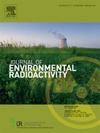福岛氚化水排放:历史核事故对健康和环境的影响
IF 2.1
3区 环境科学与生态学
Q3 ENVIRONMENTAL SCIENCES
引用次数: 0
摘要
福岛核灾难是第一起发生在沿海地区的重大核事故。它引发了人们对放射性核素通过洋流在全球扩散的担忧。将福岛氚化水排放到太平洋的决定进一步加剧了关注和批评,尽管得到了国际原子能机构(IAEA)的认可。排放的水中氚的浓度远远低于国际饮用水标准。原子能机构已经核实了水的安全性,并继续监督排放过程,以尽量减少对人类健康和海洋生态系统的潜在危害。相比之下,氚是一种天然存在的放射性核素,其从核设施中有控制地释放是全球公认的长期做法。在20世纪的核武器试验期间,除了自然和受控的排放外,大量的氚被释放到环境中,是目前全球剩余库存的数百倍。因此,人类种群和生态系统在历史上一直暴露于大量的氚,而没有明确的不利影响证据。本研究回顾了在重大核事件背景下氚化水的风险,并强调其内剂量贡献明显低于天然存在的放射性核素,如碳-14和钾-40。它比较了氚的物理特性、生物行为和对人体健康的影响与那些关键的放射性核素。根据广泛的核试验、切尔诺贝利和福岛灾难以及天然高本底辐射地区的科学证据和经验数据,本研究发现,以目前的FDNPP排放速度,没有明显的风险,并认为,控制氚化水的排放对人类健康和环境构成的风险可以忽略不计,甚至可能根本不存在。本文章由计算机程序翻译,如有差异,请以英文原文为准。
Fukushima's tritiated water discharge: Health and environmental implications derived from historical nuclear incidents
The Fukushima disaster is the first major nuclear accident to occur along a coastline. It sparked concern about the global dispersion of radionuclides via oceanic currents. The decision to discharge Fukushima tritiated water into the Pacific Ocean further intensified concern and criticism, despite endorsement by the International Atomic Energy Agency (IAEA). The discharged water contains tritium concentrations well below international drinking water standards. The IAEA has verified the safety of the water and continues to oversee the discharge process to minimize potential harm to human health and marine ecosystems. Tritium, by contrast, is a naturally occurring radionuclide, and its controlled release from nuclear facilities is a globally accepted and long-standing practice. Alongside natural and controlled emissions, a massive amount of tritium was released into the environment during nuclear weapons testing in the 20th century—hundreds of times greater than the current global residual inventory. As a result, both human populations and ecosystems have historically been exposed to substantial levels of tritium without definitive evidence of adverse effects. This study reviews the risks of tritiated water in the context of major nuclear events and emphasizes its significantly lower internal dose contribution than naturally occurring radionuclides such as carbon-14 and potassium-40. It compares tritium's physical characteristics, biological behavior, and effects on human health with those of key radionuclides. Drawing on scientific evidence and empirical data from widespread nuclear testings, the Chernobyl and Fukushima disasters, and regions with naturally high background radiation, this study finds no discernible risk at the current FDNPP discharge rate and argues that the controlled release of tritiated water poses negligible—possibly non-existent—risk to human health and the environment.
求助全文
通过发布文献求助,成功后即可免费获取论文全文。
去求助
来源期刊

Journal of environmental radioactivity
环境科学-环境科学
CiteScore
4.70
自引率
13.00%
发文量
209
审稿时长
73 days
期刊介绍:
The Journal of Environmental Radioactivity provides a coherent international forum for publication of original research or review papers on any aspect of the occurrence of radioactivity in natural systems.
Relevant subject areas range from applications of environmental radionuclides as mechanistic or timescale tracers of natural processes to assessments of the radioecological or radiological effects of ambient radioactivity. Papers deal with naturally occurring nuclides or with those created and released by man through nuclear weapons manufacture and testing, energy production, fuel-cycle technology, etc. Reports on radioactivity in the oceans, sediments, rivers, lakes, groundwaters, soils, atmosphere and all divisions of the biosphere are welcomed, but these should not simply be of a monitoring nature unless the data are particularly innovative.
 求助内容:
求助内容: 应助结果提醒方式:
应助结果提醒方式:


